
CHURCHES & ABBEYS
THE RISE AND FALL AND RISE AGAIN OF RELIGIOUS INFLUENCE IS CLEARLY EVIDENT INAND AROUND BUTTEVANT WITH SPLENDID, VAST MONASTERIES RISING IN THE 12TH CENTURYONLY TO FALL INTO DECAY AGAIN HAVING FALLEN FOUL OF THE REIGN OF KING HENRY VIII IN THE 14TH CENTURY.
ST. MARY’S AND ST. JOHN’S CHURCHES WOULD MARK A NEWERA IN RELIGION IN BUTTEVANT UPON THEIR CONSTRUCTION IN THE 19TH CENTURY.
St. Mary’s Church
St. Mary’s Church is situated prominently on Buttevant’s Main Street and was completed in 1834. Its substantial inner dimensions amount to 112’ long by 90’ wide through the trancepts (side aisles adjacent to the alter).
The north window is the Church’s most striking feature. It is 24’ high by 14’ wide and features Christ Jesus in the centre with the Blessed Virgin to his right and Joseph to his left.
On the outside of these is St. Coleman of Cloyne and St. Francis of Assissi along with some fifteen angels all playing musical instruments of various sorts in the upper tracery.
The large windows in the west and east trancepts compliment the north window’s style featuring The Assumption on the west window and the Ascension on the east and are both signed by the artist as “Watson, Youghal 1906”.
The lower portion of this East Window, has six panels, two of the Sacred Heart and St. Mary Alacoque, two of Jesus in agony comforted by an angel bearing a chalice, while the two central panels have passion flower plants.
The lower portion of this West window has also six panels, four of Mary Immaculate, St. Joseph, St. Anne and Saint Jaochim.
The four windows in the nave of the Church were insetted when Rev. Timothy, Canon Murphy was P.P., 1951-1974. On the east side, there are Blessed Oliver Plunkett and St. Columba, while on the West side, there are St. John the Baptist and Christ the King. The large rose window on the south is filled with stained glass, but no figures.
The Desmond Tower was incorporated into the rear of St. Mary’s and commissioned by the Earl of Desmond (King of Munster) who retired to Buttevant.
gallery of st. mary’s church (click to enlarge the photos)
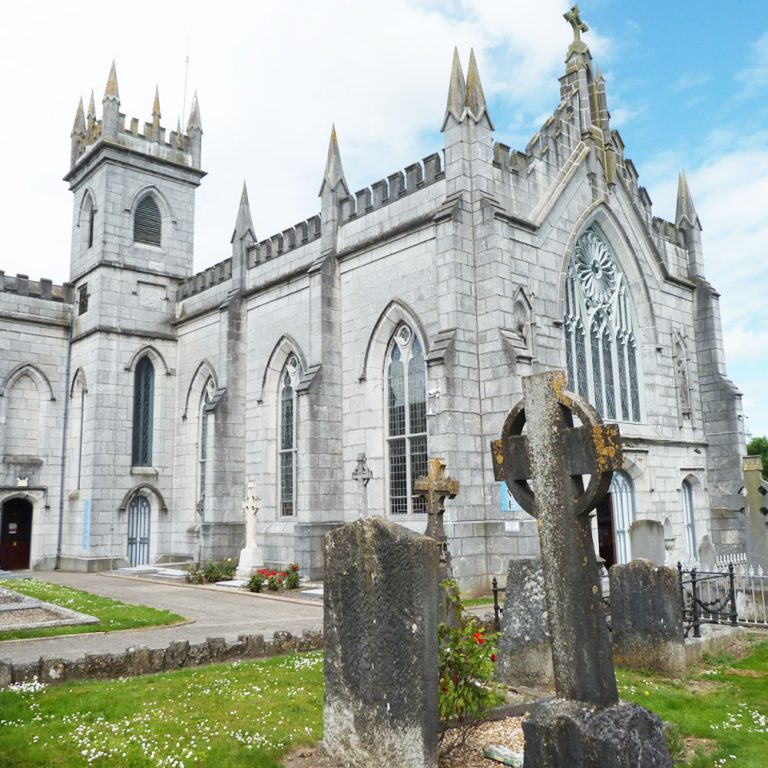
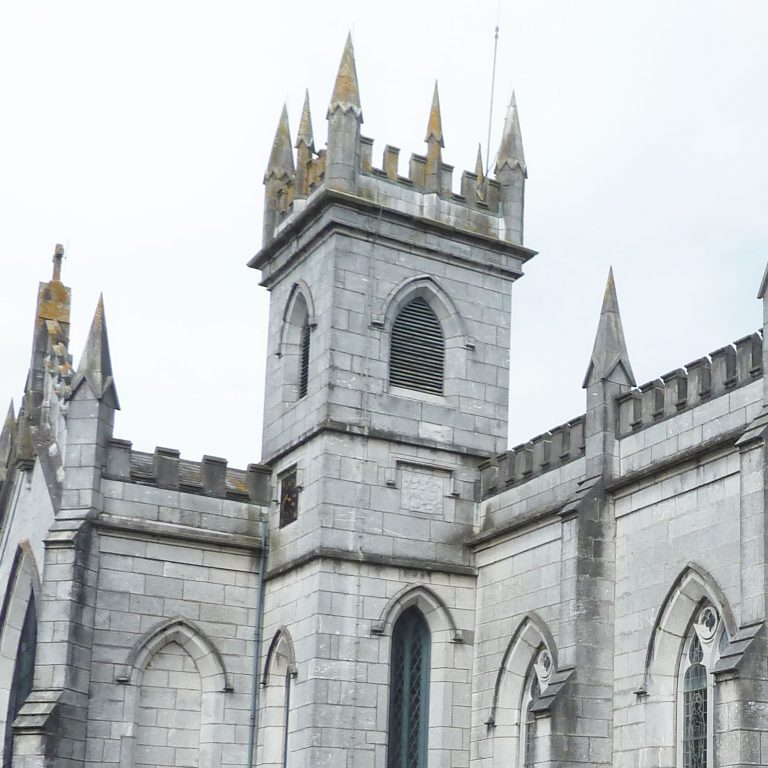

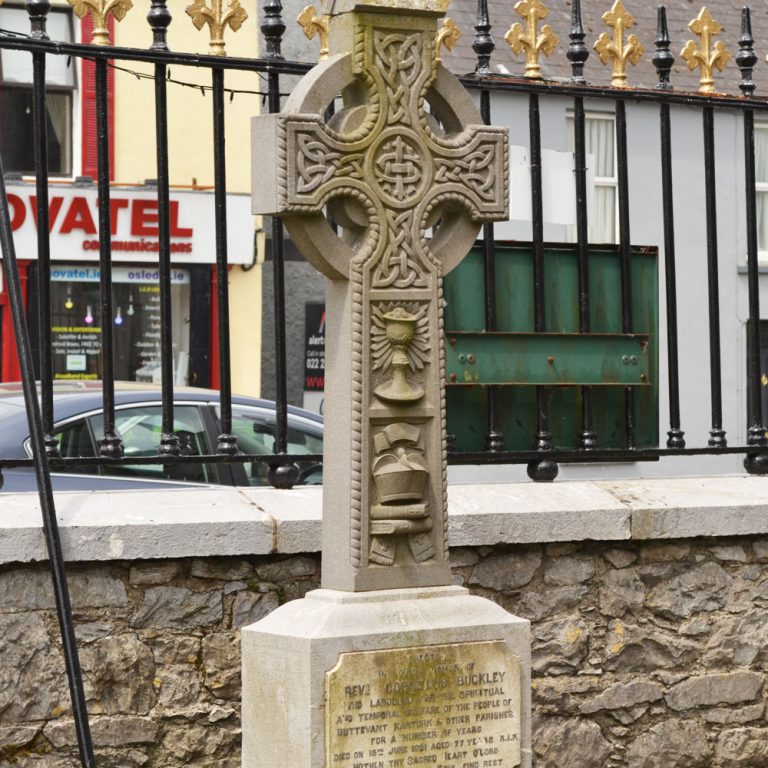
Buttevant Abbey
Right beside St. Mary’s Church can be found the ruins of the thirteenth century Franciscan Abbey. As regards to structure and architectural quality, the Friary was, and still is, historically a masterpiece of its time. Construction of the Priory was started in 1251AD and progressed over several phases bankrolled by the ever more wealthy and powerful de Barra family. There originally stood a Bell Tower as part of the complex that towered over the site, but after many, many years of neglect and disrepair this collapsed in 1814, the Franciscans having left the Buttevant in the 1780’s.
The site of the abbey is interesting in that it was built on a shelving area towards the river which necessitated the erection of crypts or vaults (a stone chamber beneath the floor), a rare feature in this church.
The principal crypt is entered from a cellar which was under a part of the conventional building. The crypt is lighted by two trefoil-headed lancet windows with large inward splays.
There is a second or sub-crypt under first one above. It is of smaller dimensions and is entered by a rectangular opening in the floor of the upper crypt again lighted by two lancet windows.
It could be argued that these crypts represent the one major fault in this building. It also, however, displays the sheer skill of the builders who, perhaps, skillfully took advantage of the natural features of the site.
On entering the abbey one is Introduced to years of painstaking and often extremely difficult craftsmanship. Today, of course, perhaps less than a half of the craft man’s genius has survived. It is, however, enough to capture our admiration for, unlike today, these men were working with extremely crude instruments but nevertheless produced almost perfect work.
gallery of buttevant abbey (click to enlarge the photos)
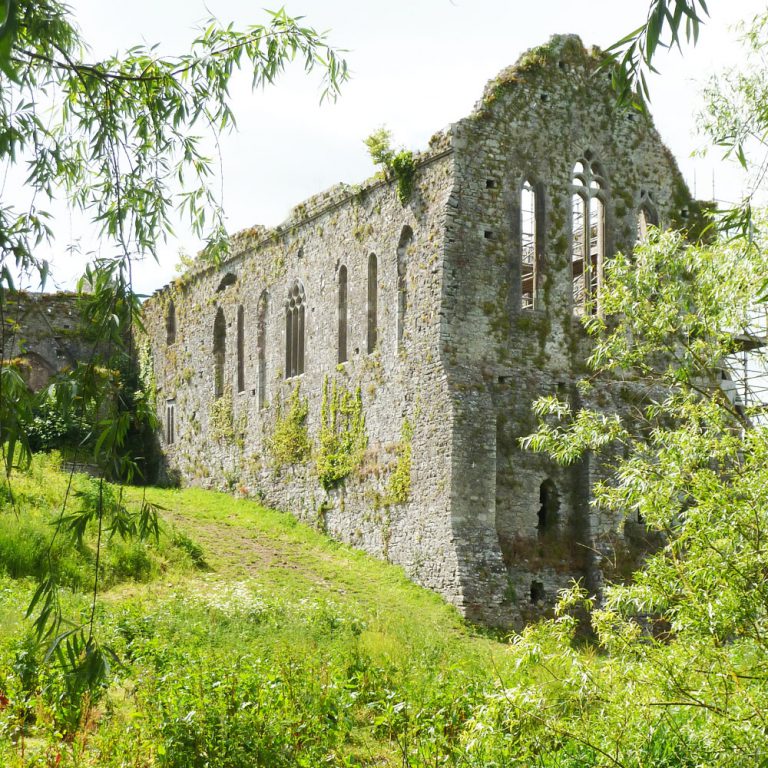

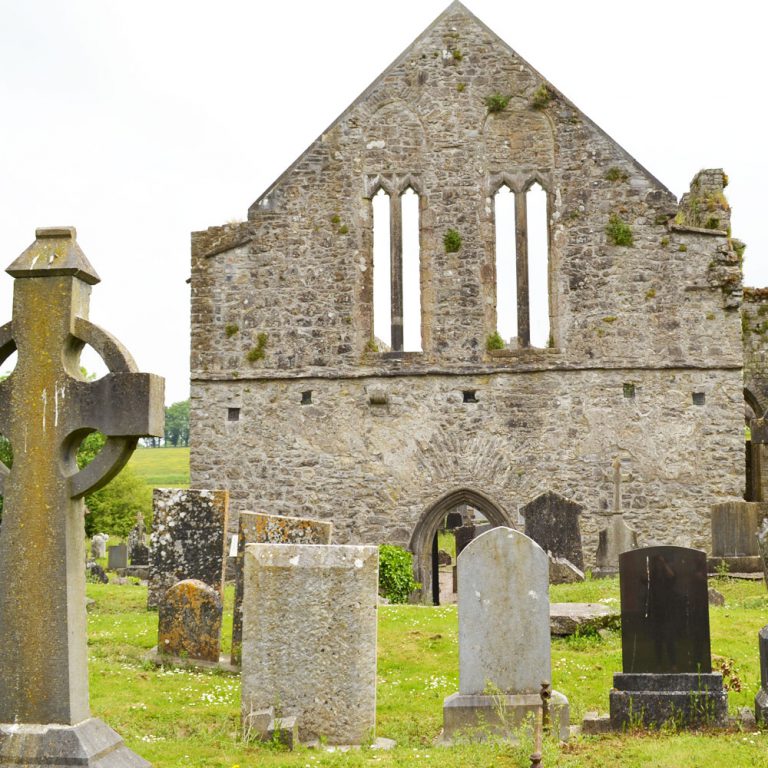
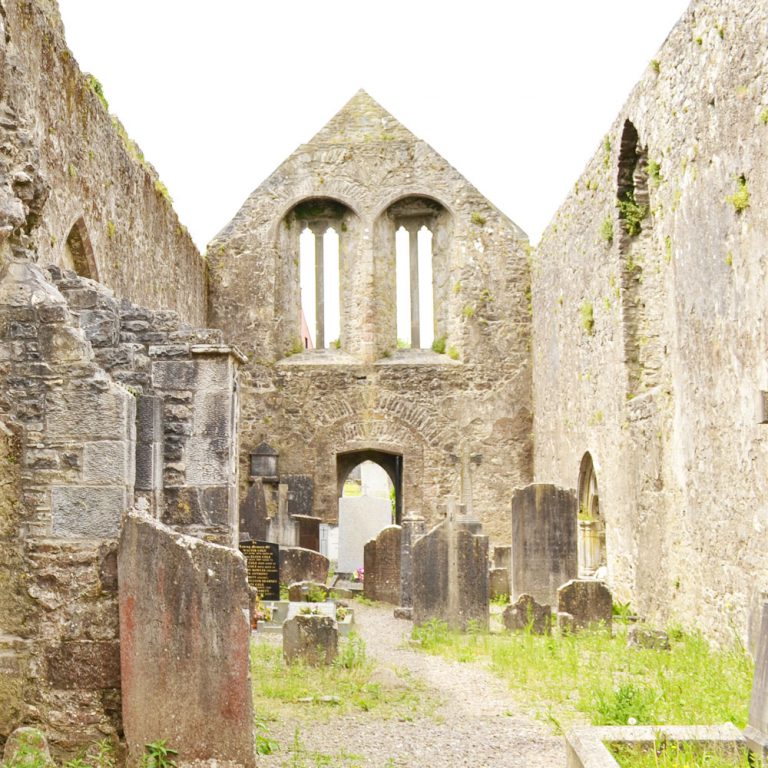
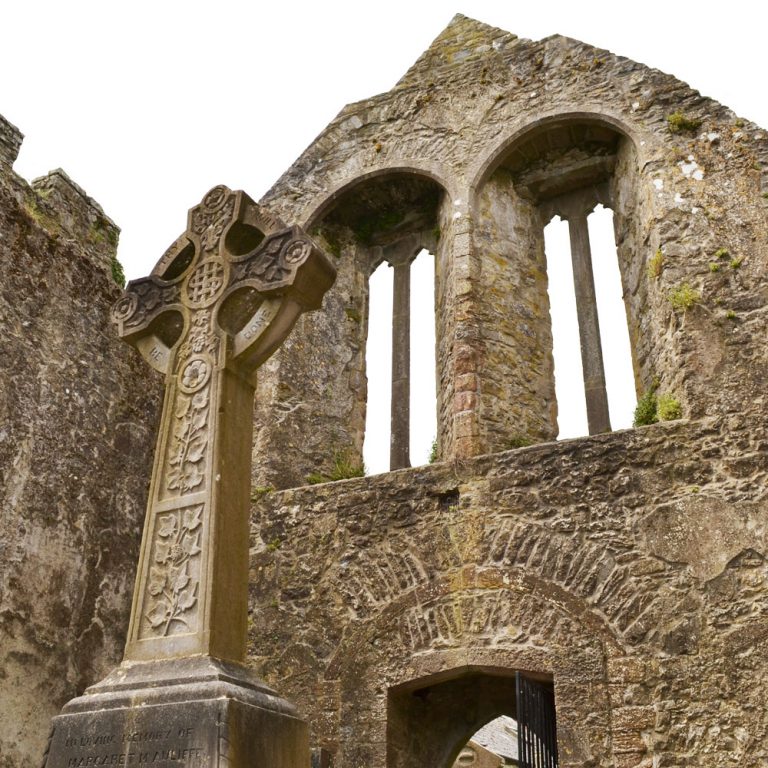

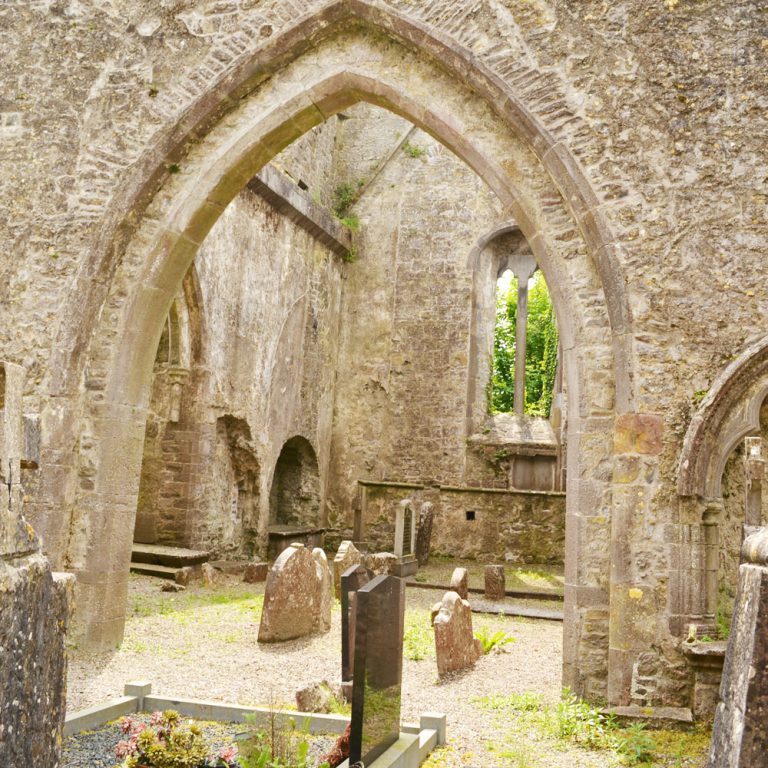
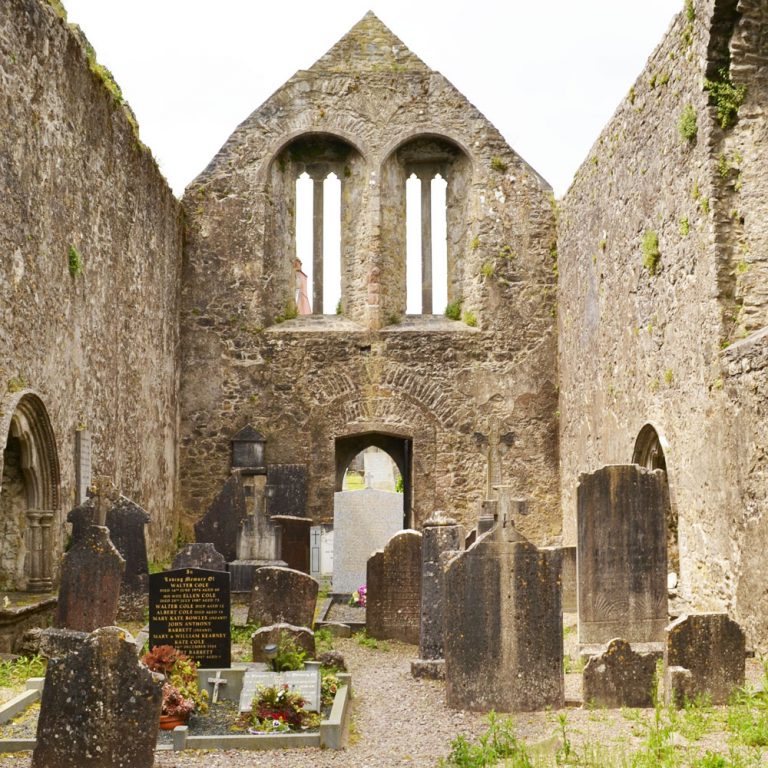
St. John’s Church
Situated at the southern end of the town, just off the main street and close to Buttevant Castle lies the Church of Ireland Church dedicated to St. John. This church was originally actually called St. Brigid’s in honor of St. Brigid and an earlier Church on this site of this same name. St. Brigid was of course the sister of St. Coleman the first Bishop of the diocese of Cloyne of which Buttevant is a part of.
The Church is a handsome structure In the later English style with a square embattled tower, surmounted by a finely proportioned spire.
There are some 300 burial plots in the adjoining graveyard including those of British army personnel from the First World War (1914 – 1918) who died of their injuries while at nearby Buttevant Barracks or the supplementary Ballyvonaire Barracks also nearby.
St. John’s on a lighter note is also of course famous as the starting point of the worlds first Steeple Chase race and on a good day you can also see the finish line from here; the Steeple of St. Mary’s Church in nearby Doneraile.
gallery of st. john’s church (click to enlarge the photos)

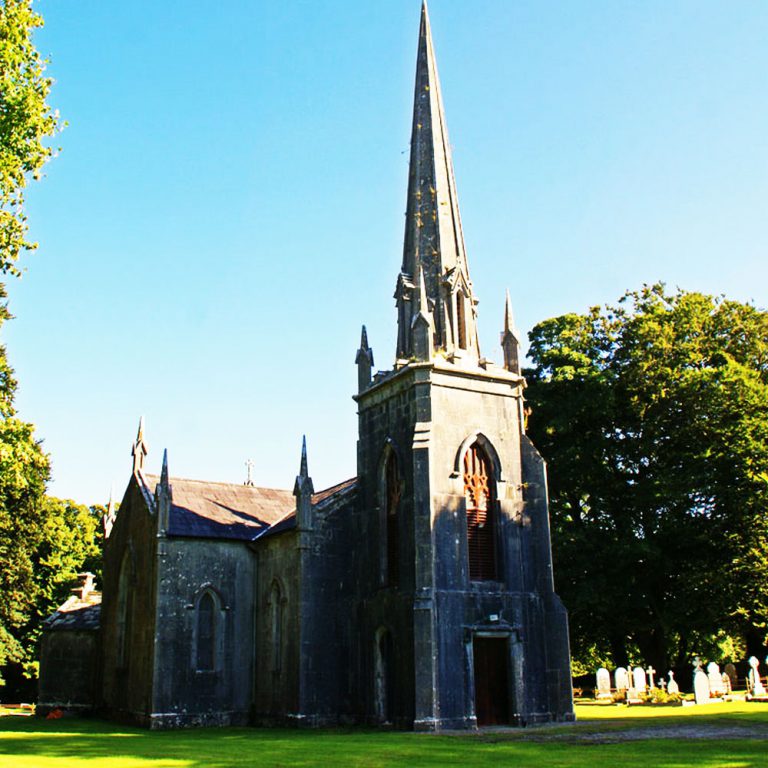
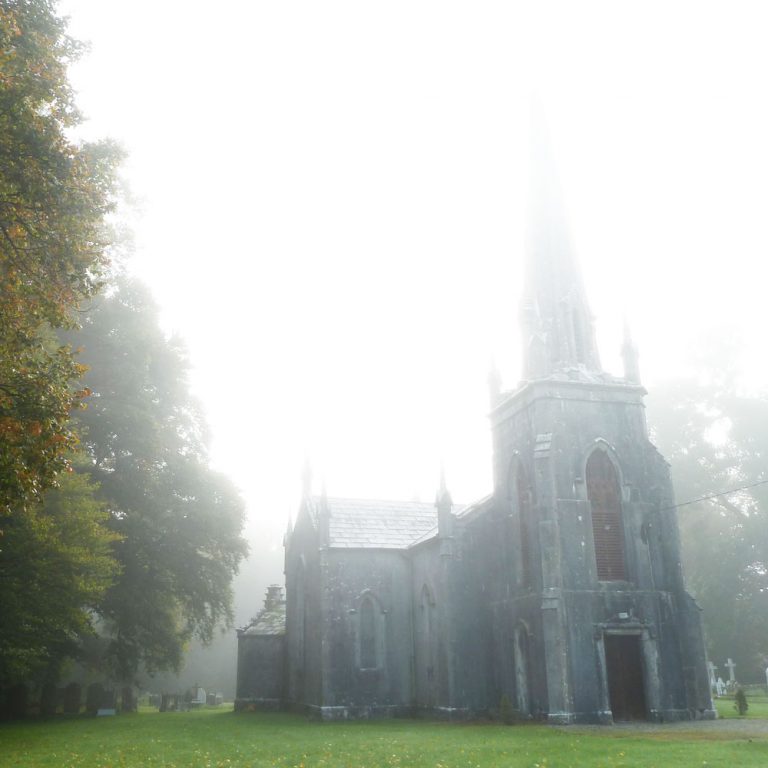
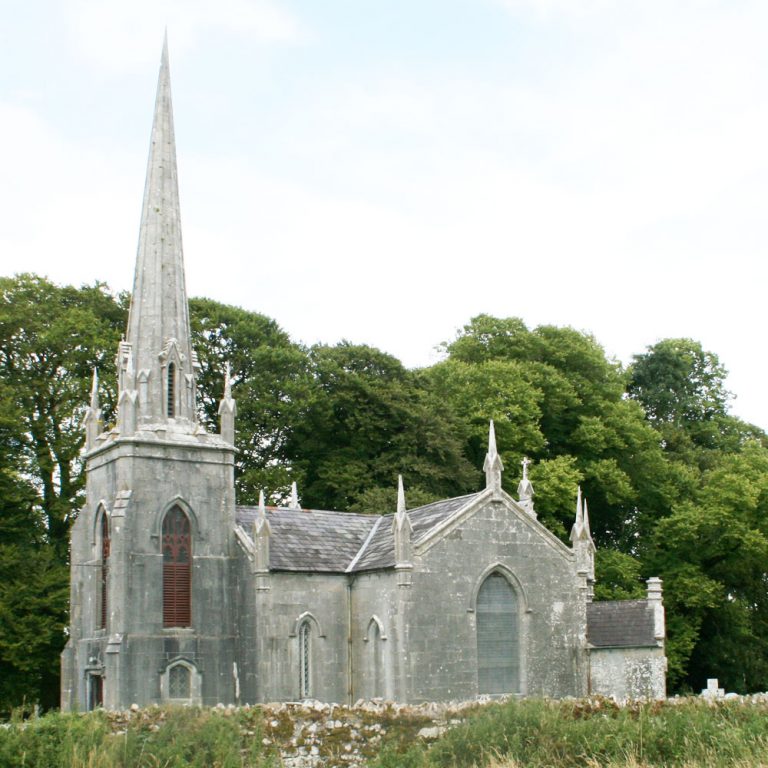
Ballybeg Abbey
Ballybeg Abbey is situated approximately 1km south of Buttevant town (just out the Mallow road). Construction commence here started in 1229 soon after the arrival of the de Barry family.
Ballybeg was an Augustinian establishment and as such would have been much larger than the nearby Franciscan monastery in the town itself.
Augustinians played and administrative, organisational, quasi-political role in norman society and as such were a wealthier order than their Franciscan counterparts who played a more strictly religious role in society.
Time has not been kind to Ballybeg Abbey, but enough remains to suggest that a huge complex stood here, one that was the centre of a industrious, wealthy and powerful community.
The almost perfectly preserved Dovecot is a particular treat for today’s visitor. This round tower structure which now is separated from the rest of the ruins, was in in the abbey’s prime incorporated into the greater building.
The Dovecot was designed and used for housing pigeons and doves which were seen as an important food source in norman Europe, providing meat, eggs and dung for fertilizing crops. Pigeon dung fertilizer was a more effective and valued fertilizer than that of cattle, sheep or pigs.
Because pigeons and doves themselves could be a very big threat to the grain crops, dovecots were strictly legislated for in medieval law with their size directly proportional to the amount of land the owner held. The size of the dovecot here at Ballybeg suggests an Augustinian holding in Buttevant in excess of 500 acres.
gallery of ballybeg abbey (click to enlarge the photos)
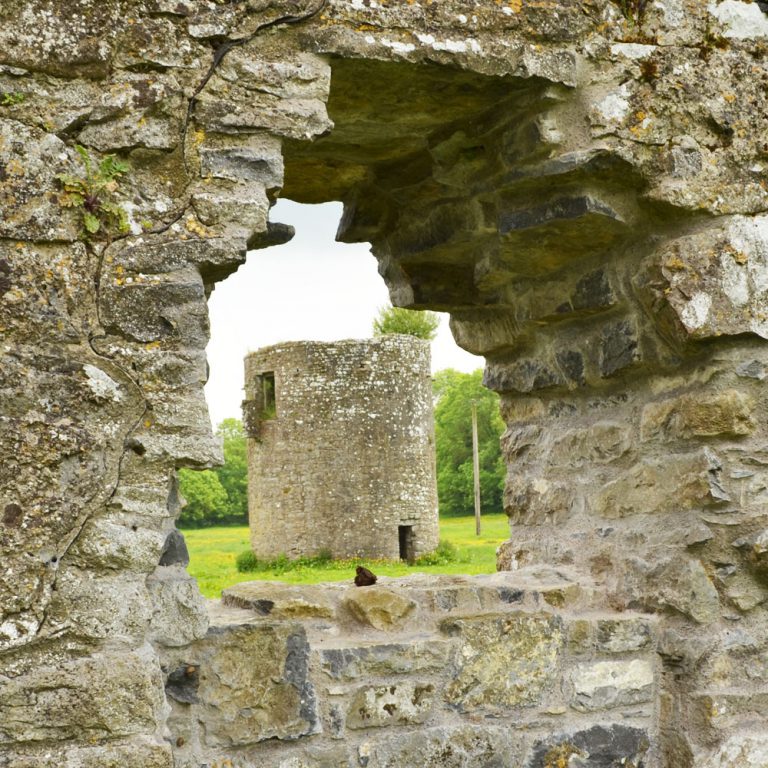
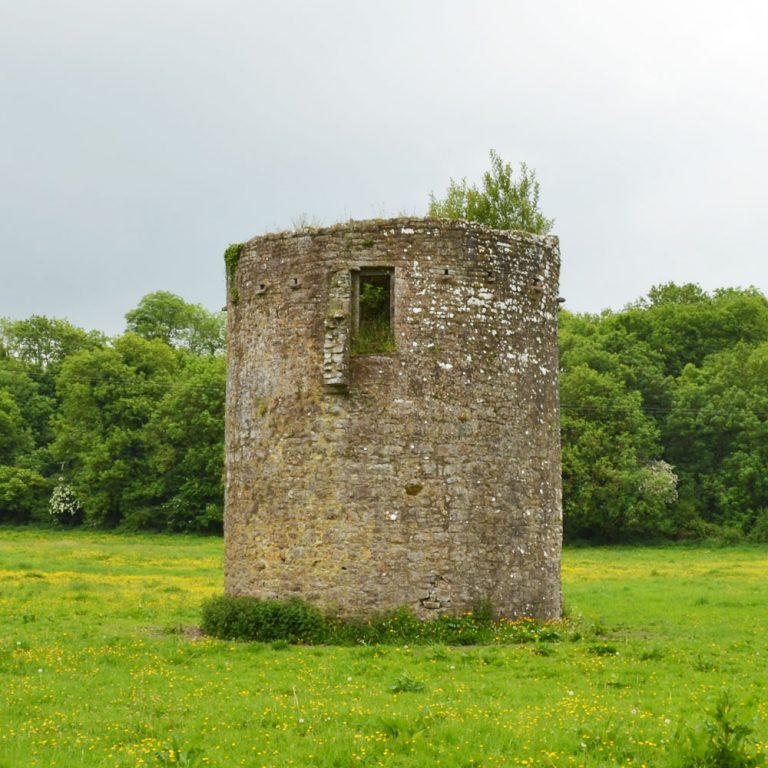
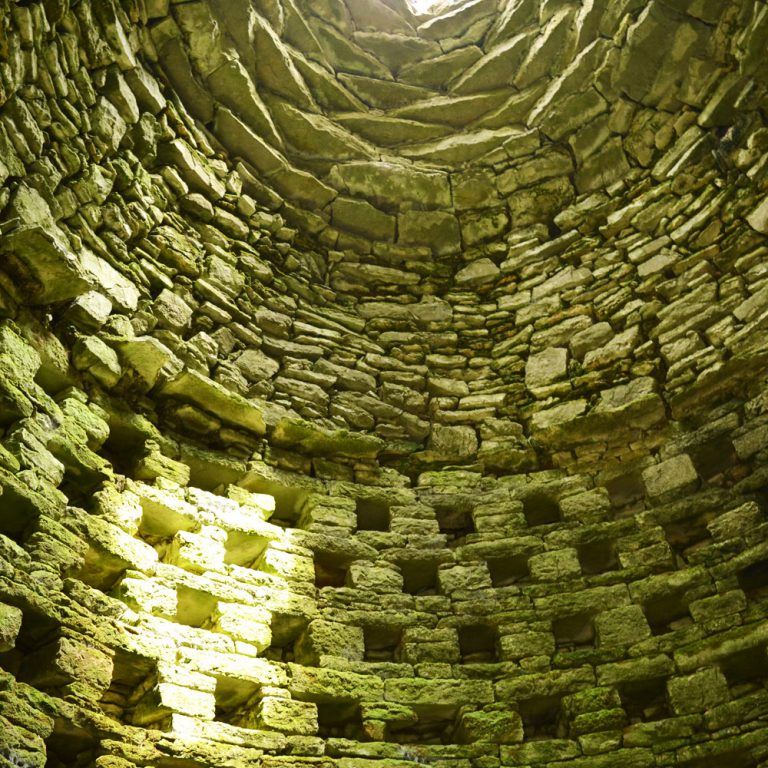
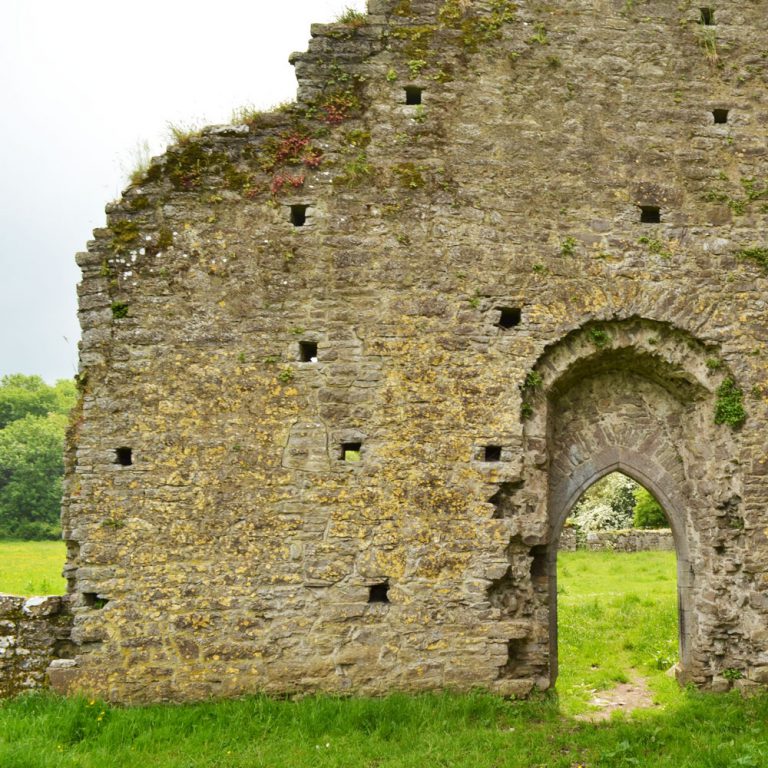
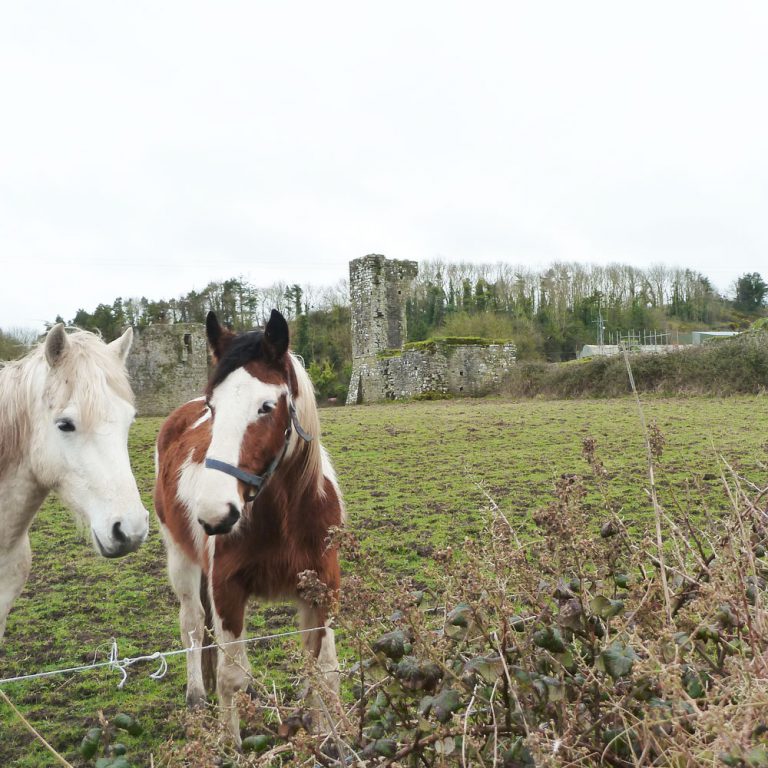
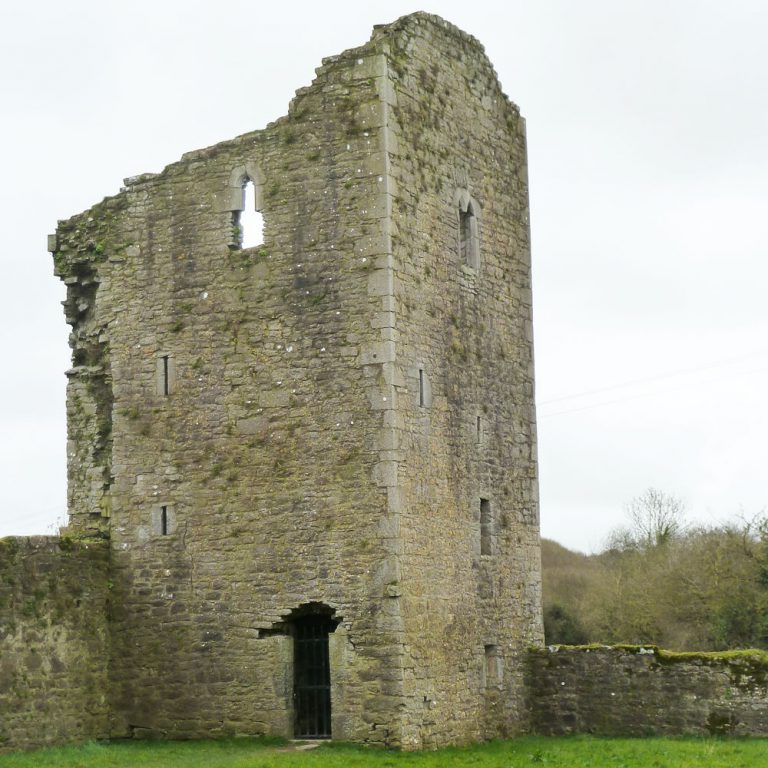
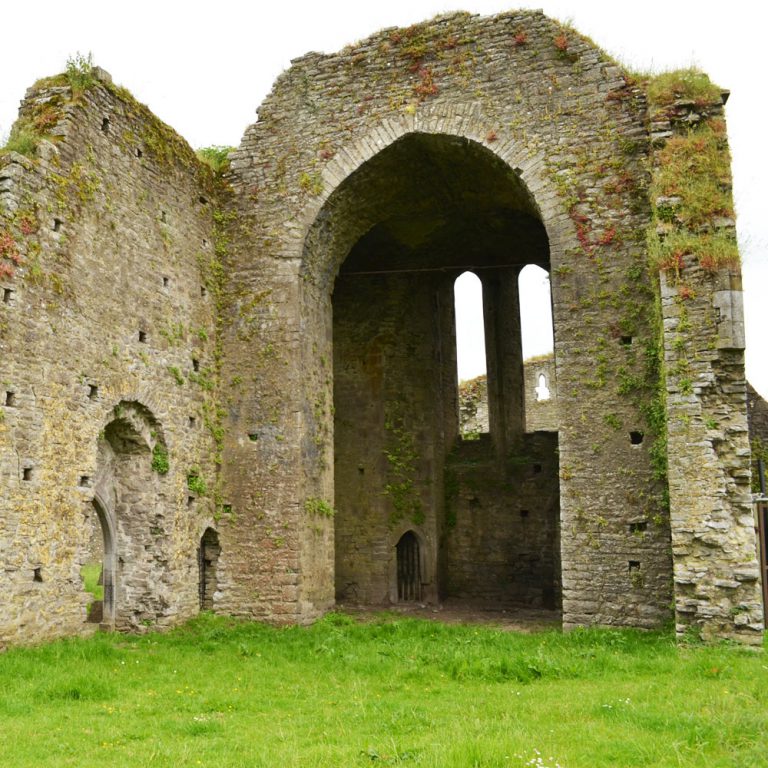
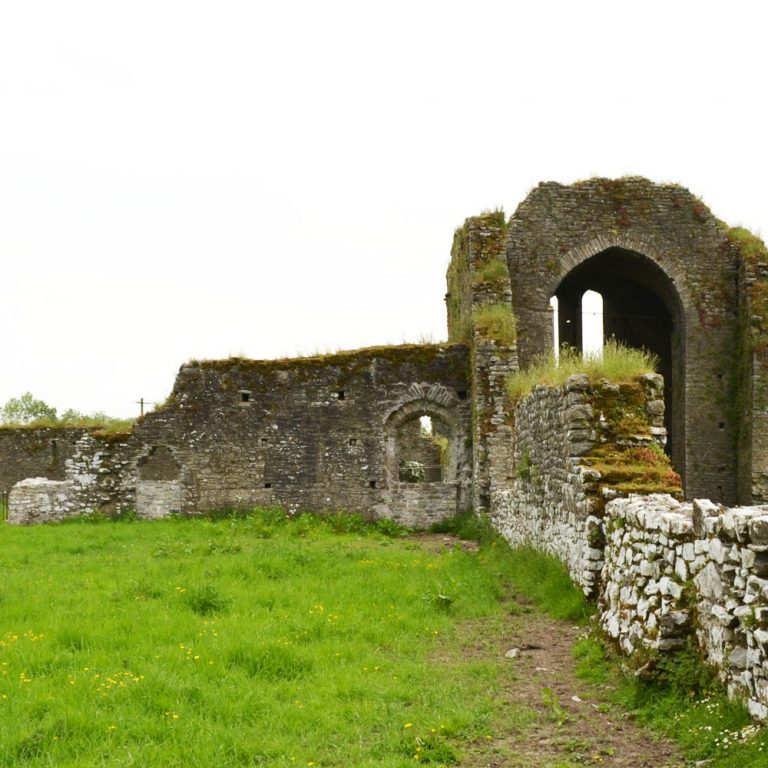
The Clapper Bridge
Another interesting medieval feature of Buttevant is to be found close to Ballybeg Abbey in the form of a “Clapper Bridge”. Clapper bridges were a primitive form of bridge engineering whereby the bridge was formed by large, slabs of solid stone spanning a river (at a relatively shallow point or fjord) supported by stone piers or resting upon the banks of the river or stream.
Buttevant Clapper Bridge was erected at or about the time of the construction of the abbey to facilitate the monks crossing the River Awbeg to and from the town and their lands beyond. The Augustinians also had a mill close to the town at this time at a site close to where Buttevant Mill stands today.
The bridge is made of huge 3 metre long slabs of solid limestone weighing more than a tonne each. One can only imagine the effort it took to move these stone to the site and into position in 13th century!
gallery of ballybeg abbey (click to enlarge the photos)
